We believe the key to staying competitive in the automotive industry will be a faster integration of eco-friendly technologies and enhancing preparedness for upcoming environmental regulations.
TATA MOTORS' MAJOR INNOVATIONS IN ENGINE TECHNOLOGIES
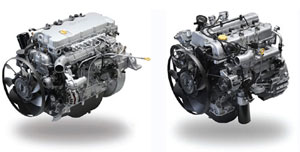
Next Gen DICR Engines
These engines, available in 3L and 5L capacities, offer best-in-class fuel economy, excellent performance lower total cost of ownership, better reliability and durability. These engines are BS IV compliant and are design protected to meet future emission requirements (BS VI).
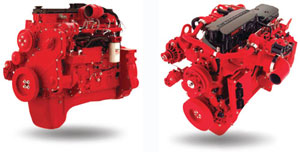
Tata Cummins Engines
As a part of our collaboration with Cummins, we have manufactured a wide spectrum of best-in-class engines that deliver high value propositions like fuel economy, reliability and durability.
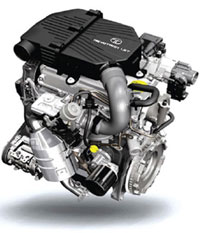
Revotron
This next-gen aluminium body, light-weight engine has a stiffened crank case with smart electronic control, which minimises noise and vibration and ensures precise control. With the unique multi-drive mode feature, this engine guarantees best economy and driving pleasure.
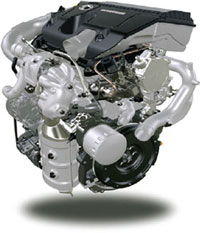
Revotorq
Tata Motors' Revotorq 1.05L diesel engine made its debut with the Tiago. The engine has been globally benchmarked on various parameters such as performance, economy and refinement.
With environmental innovation embedded in its product development strategy, Jaguar Land Rover is focusing on vehicle light-weighting, powertrain right-sizing and increasing the application of electrification in its propulsion systems.
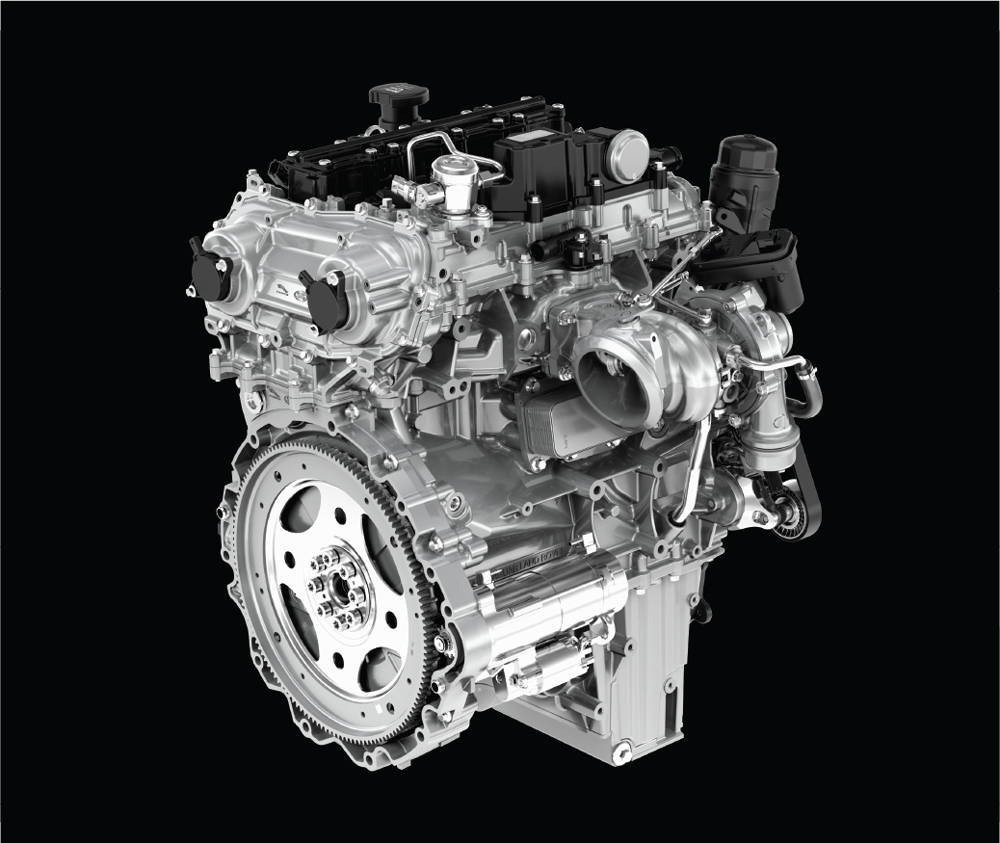
Ingenium Engines
BY INCREASING THE USE OF ALUMINIUM ACROSS MODELS AND ENHANCING THE USE OF ITS OWN INGENIUM RANGE OF EFFICIENT ENGINES, JLR IS REDUCING THE EMISSIONS ASSOCIATED WITH ITS LIGHTWEIGHT VEHICLES.
ALREADY, THE 2.0-LITRE, FOUR-CYLINDER TURBODIESEL ENGINE HAS BEEN INTRODUCED TO JLR'S XF AND XE MODELS, AND WILL EVENTUALLY FEATURE IN MOST CURRENT AND NEW MODELS. THE INGENIUM ENGINES ACHIEVE JUST 99G/KM OF CO2 IN THE JAGUAR XE AND 104G/KM OF CO2 IN THE JAGUAR XF.
THE ENGINES, WILL NOT ONLY MINIMISE EMISSIONS BUT ALSO WILL BRING DOWN THE RUNNING COSTS OF THE CARS AND BE MORE EFFICIENT.
COMPLYING WITH EU LEGISLATION, THE STATE-OF-THE-ART ENGINE CAN BE ADAPTED TO INTEGRATE FUTURE TECHNOLOGY ADVANCES AND REGULATION CHANGES.
THE PRODUCTION OF 2.0-LITRE, FOUR-CYLINDER INGENIUM PETROL ENGINE HAS STARTED FROM APRIL 2017. THIS WILL DEBUT IN JLR VEHICLES IN THE SUMMER.
Along with these-next generation engine technologies, Tata Motors is working to create futuristic transmission solutions that offer best-in-class driving experiences, fuel efficiency, performance and value proposition to customers. Some of our evolved transmission technologies are:
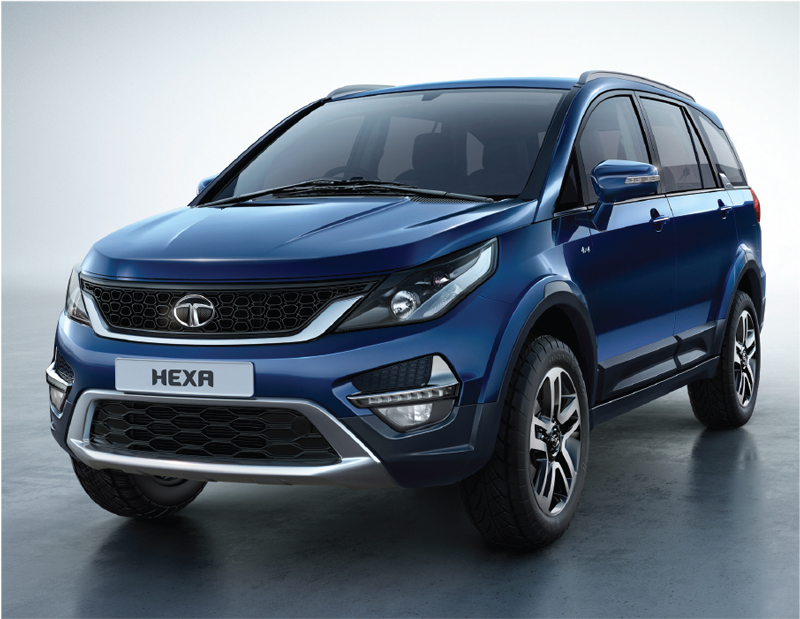

Intelligent Gear Shift Indicator
This prompts the operator to select the gear, which ensures the best balance of fuel economy and driving performance.

6L50 Automatic Transmission
Launched in Hexa and Xenon, this transmission is six-speed, electronically controlled with two overdrive ratio gears.

Easy Shift Technology on Passenger Cars
Compared to conventional ATS, it is designed to deliver an optimum combination of driving comfort, coupled with performance, fuel economy and better affordability.

G550 Automated Manual Transmission ('EasyShift' on CVs)
This AMT solution has been developed on New Gen 6-speed. It has been launched on Ultra bus with New Gen 3 litre engine. Its full potential can be leveraged with the advent of Hybrid.
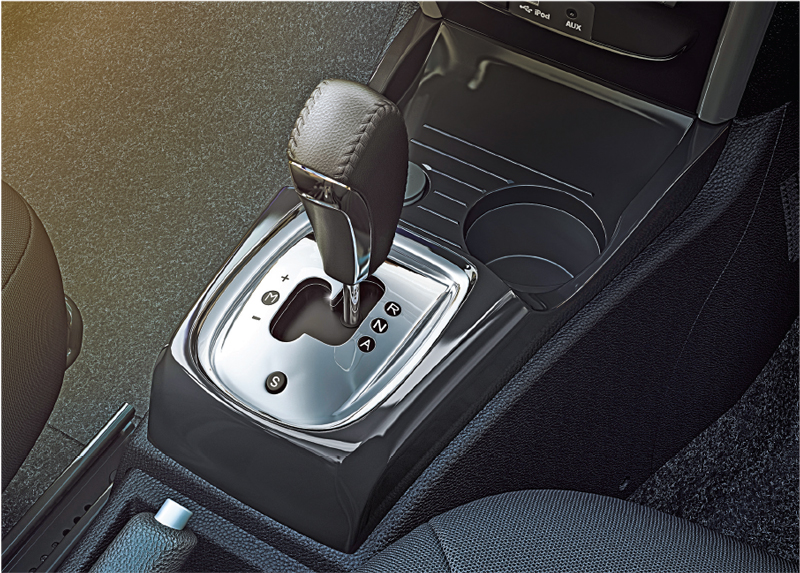
JLR also continues to invest significantly in the development of new powertrain technologies with plans to introduce Mild Hybrids (MHEVs), Plug-in Hybrids (PHEVs) and Battery Electric Vehicles (BEVs) into its product range. It currently offers diesel hybrid variants of the Range Rover and Range Rover Sport.
Partly funded by the British Government, JLR's TRANSCEND programme aims to rebuild the UK's transmission production through investment in processes to develop lighter components as well as more energy-efficient manufacturing production. This is an advanced research project that aims to create lightweight, eight-speed transmission with an ultra-wide ratio spread of 20, which is more than double that of a conventional eight-speed automatic. Weighing around 20 kgs less than existing eight-speed automatics, TRANSCEND could be used in longitudinal rear-wheel drive and all-wheel drive vehicles.
Since 2008, the Company is investing heavily in the development of ultra-clean petrol and diesel engines. It has been constantly reducing NOx emissions with every new model year vehicle. The Company's latest EU6 diesel engines are among the cleanest in the world, comparable with petrol engines, but with up to 20% lower CO2 emissions.
JLR is also introducing a range of alternative powertrains from 2018 and beyond. This includes full electric, hybrid and mild hybrid solutions. It aims that by 2020, half of its range will be available with an alternative power option, suiting different customer needs.
Tata Motors is also introducing zero-emission, clean drivelines into its mainstream product line. Continuing with our commitment towards the development of low-emission technologies, we introduced our fuel-cell bus for zero-emission sustainable urban transport for future cities. The bus is developed on the same platform as the series of hybrid bus.
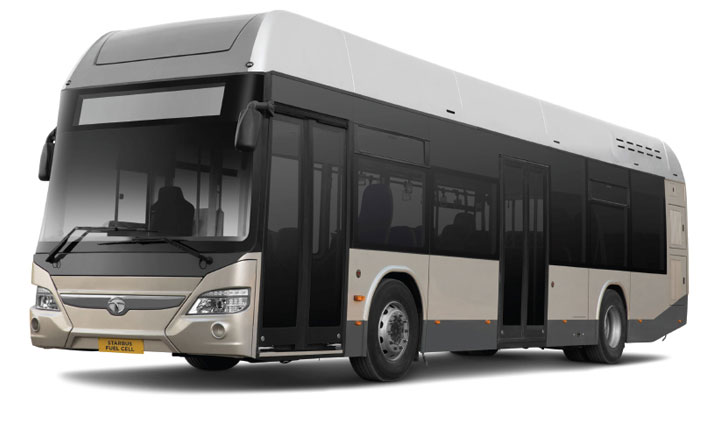
Some of our key initiatives in this direction are:

Fully Electric
Fully electric vehicles ranging from small commercial vehicle to 12m buses, driven by a powerful, high efficiency permanent magnet motor and high energy lithium-ion battery packs.

Engine Downsizing
Fuel efficiency improvement in diesel passenger car by engine downsizing (30% engine displacement reduction), friction reduction in piston ring pack and implementing multiple drive modes.

Fuel Control
Fuel efficiency improvement in diesel small commercial vehicles by the implementation of fuel control unit based FIE system on twin-cylinder turbo diesel engine.

Motorised EGR System
Better emission control by motorised EGR system for small commercial vehicles employing two-cylinder NA common rail BS IV engine.

Hybrid Bus
Series hybrid bus with New Gen 5L BS IV diesel engine developed and serialised; the vehicle has substantially superior fuel economy over baseline diesel vehicle.
Better Fuel Economy
Multi operation mode (economy and normal torque mode) for better fuel economy and drive ability on commercial vehicles fuelled with CNG.

Build and Testing
Fleet of fuel cell bus under build and testing.
Pushing the Boundaries of Electrification
WITH RETURN TO RACING IN AUTUMN 2016 SEASON OF THE FIA FORMULA E CHAMPIONSHIP, WHICH PROVIDES A REAL-WORLD, FAST-TRACK TEST-BED FOR FUTURE JAGUAR LAND ROVER ELECTRIFICATION TECHNOLOGY, TRANSFERRING INNOVATION FROM TRACK TO ROAD.
JAGUAR I-PACE IS A PREVIEW OF JLR'S FIRST PRODUCTION BATTERY POWERED CAR, AND DEMONSTRATES ITS COMMITMENT TO CREATE EXCITING AND DESIRABLE ELECTRIC VEHICLES.
The Range Rover Hybrid
COMBINING ENVIRONMENTAL CREDENTIALS WITH A GREAT DRIVE EXPERIENCE
THIS IS THE FIRST DIESEL HYBRID SUV OF ITS KIND IN THE WORLD WHICH COMBINES THE BENEFITS OF BOTH AN ELECTRIC MOTOR AND CONVENTIONAL POWERTRAIN. WITH THIS INNOVATIVE TECHNOLOGY, ENERGY FLOWS SEAMLESSLY BETWEEN BATTERY AND ENGINE. THE 3.0L SDV6 DIESEL ENGINE WITH A 35KW ELECTRIC MOTOR DELIVERS 14% LOWER (27G/ KM LESS) CO2 EMISSIONS COMPARED TO THE TDV6 ENGINE AT 169G/KM.